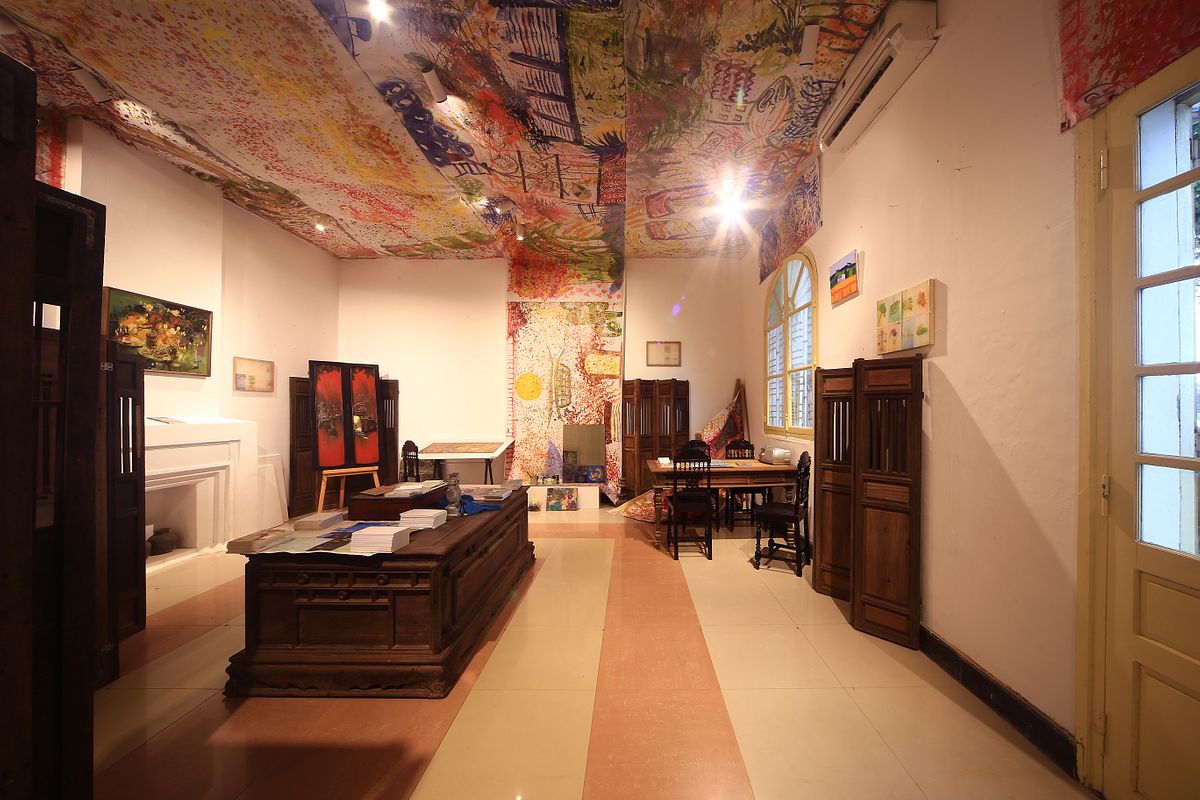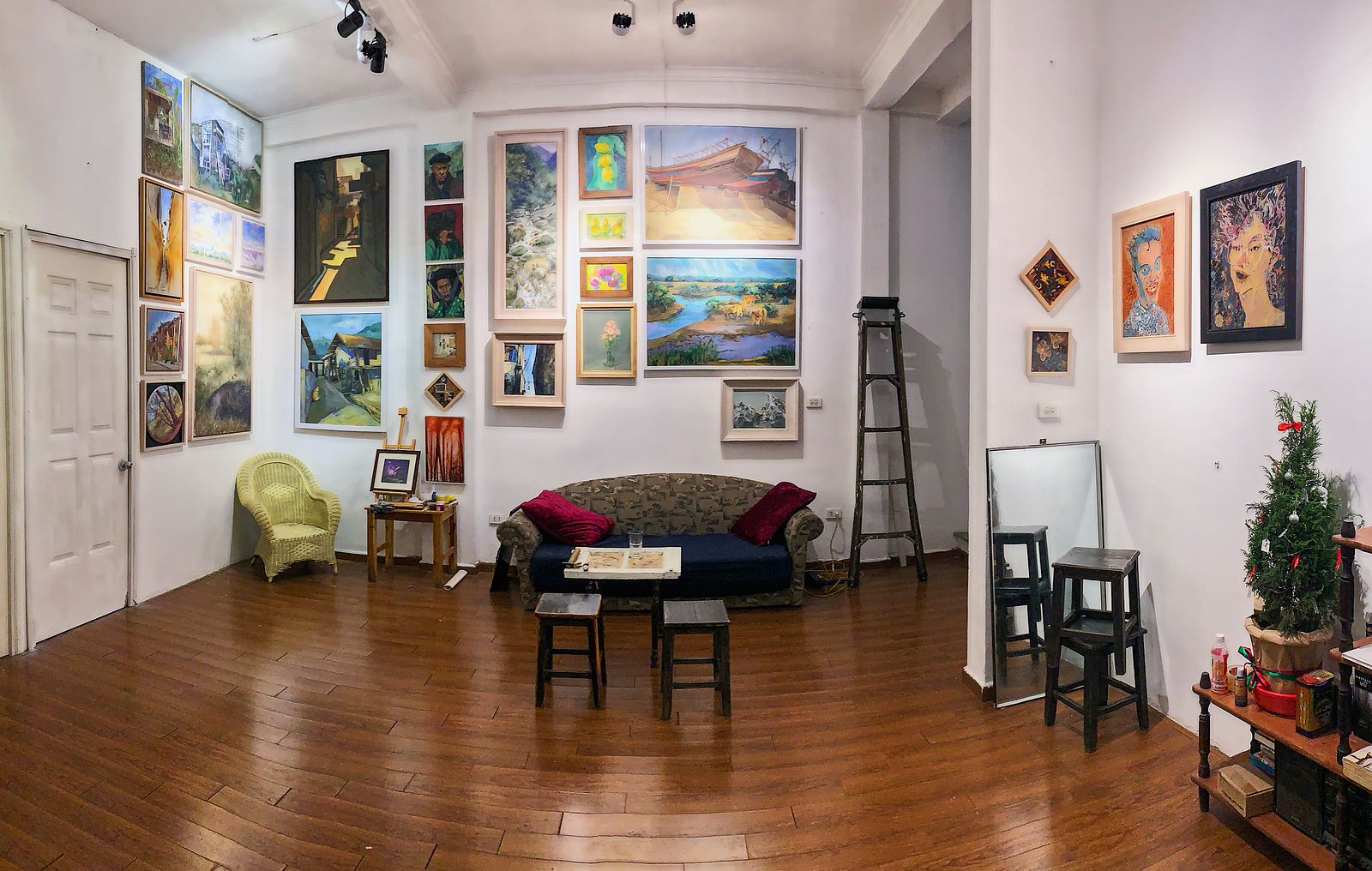“I cannot stop opening doors,” Phan Lê Hà said in regard to the physical objects that reappear throughout her creative works.
Proof of Lê Hà's preoccupation with doors surrounded us in “Phía sau những cánh cửa – Dạ khúc mưa (Behind Doors - The Melody of Rain),” her ongoing art installation in Huế. The wooden, often intricately carved, and significantly weathered doors had been collected in Hanoi and Huế for the show that was to be unveiled to the public that evening.
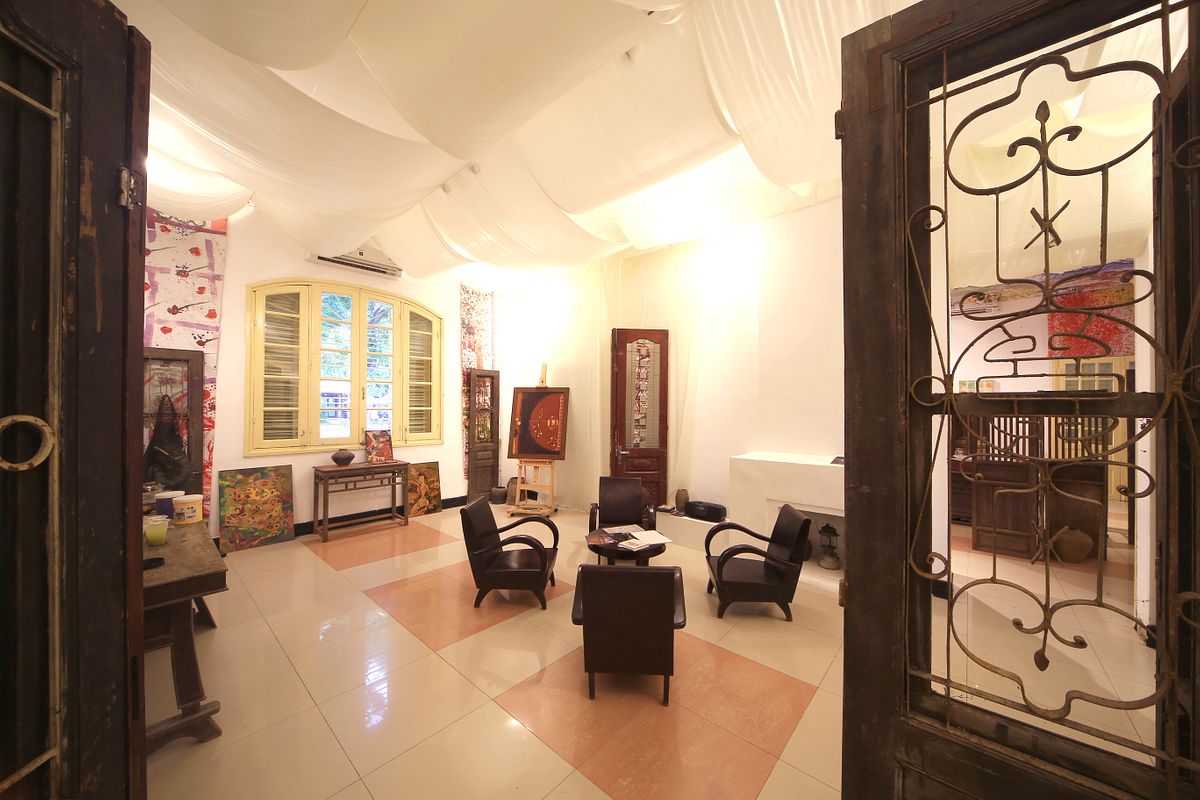
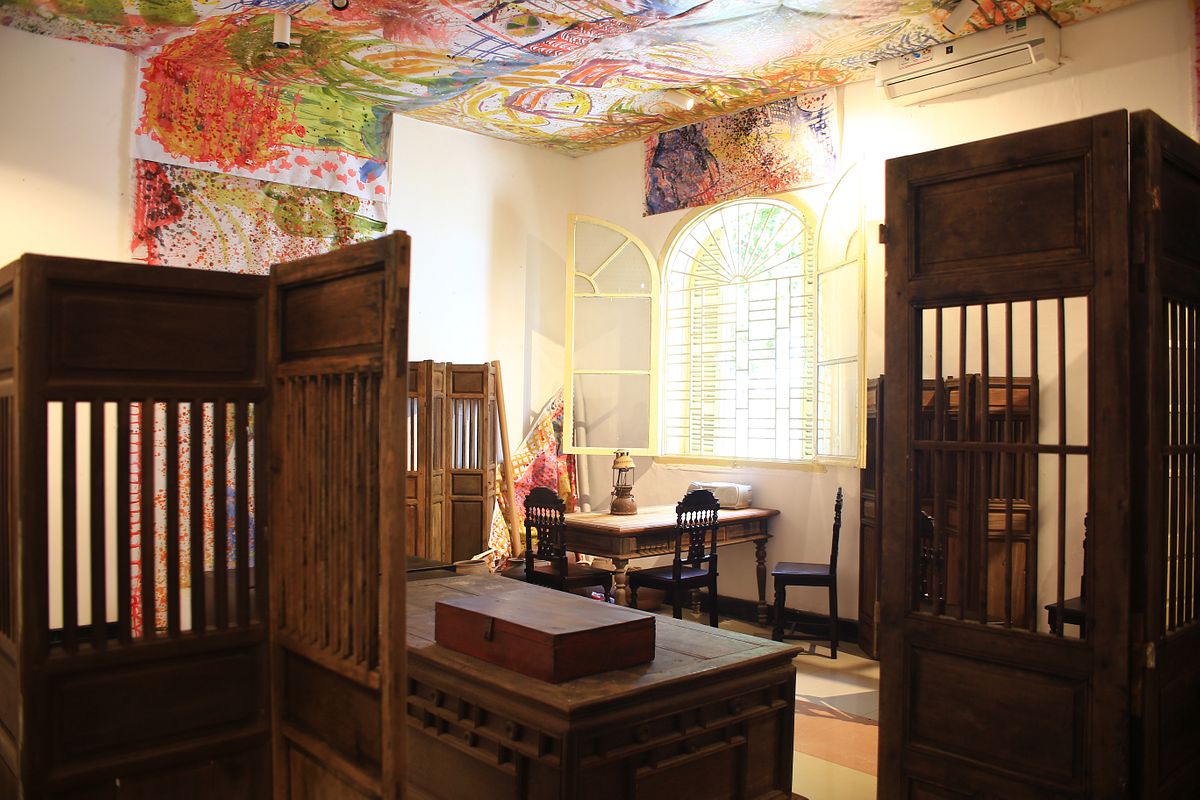
I was shocked that Lê Hà had several hours to sit and talk about her art and process considering all she was managing at that moment. While I first connected with her via her poetry, she is most well-known as an academic. A Senior Professor at the Sultan Hassanal Bolkiah Institute of Education (SHBIE) at the University of Brunei Darussalam (Universiti Brunei Darussalam), the Hanoi intellectual has authored canonical texts regarding language and education, and international higher education. She is also the founder and lead organizer of Engaging with Vietnam, an annual academic conference series that, since 2009, has brought together local and international scholars and artists from around the world to present on different topics related to Vietnam in the world, Vietnam’s history, society, culture, education, development and art. During its 14th rendition in Huế, Lê Hà was unveiling this second art show at the Điềm Phùng Thị Art Museum created in coordination with Liam C. Kelley and Trần Quang Trung.

Lê Hà speaks to the crowd on the installation's opening night.
“I am an artist that gives people a lot; some would say too much. I believe objects have their own power,” Lê Hà said when asked how she hopes or expects people will respond to the exhibition if they go in knowing nothing about the work ahead of time. She notes that she is a very present artist who enjoys speaking with guests about her ideas and vision and offering up tidbits of behind-the-scenes details.
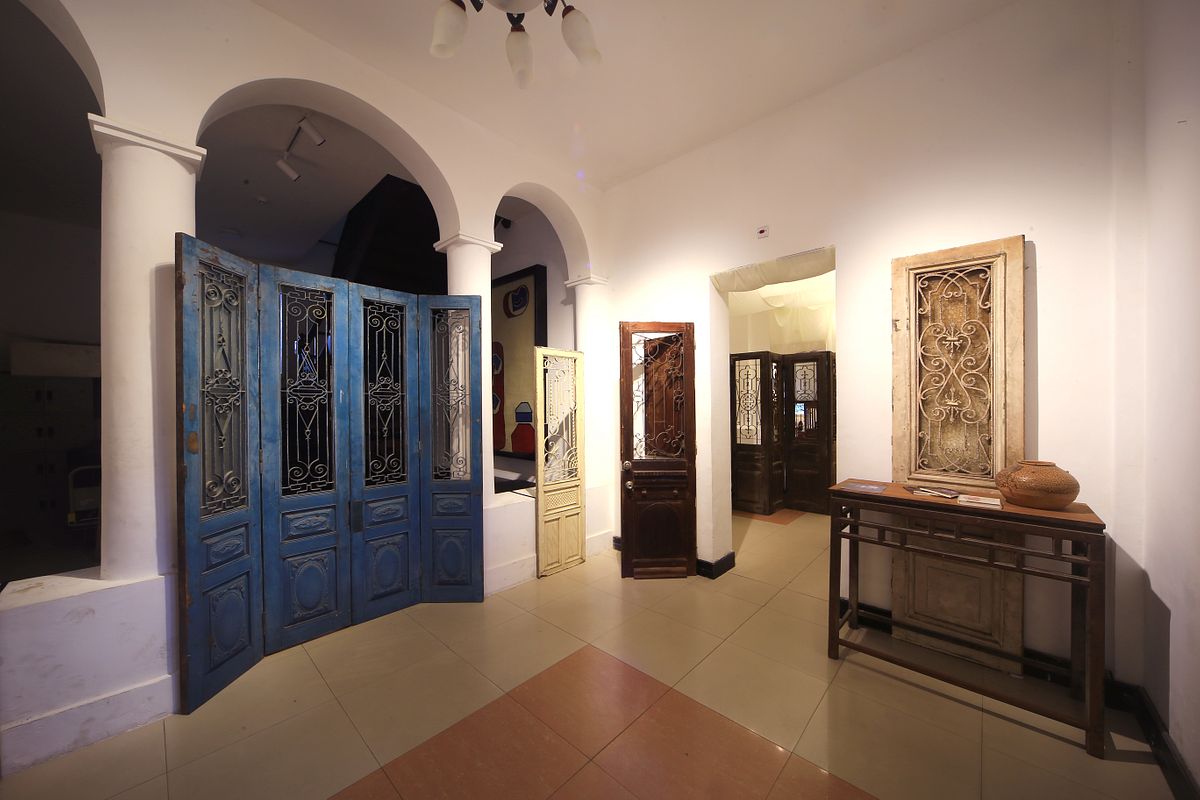
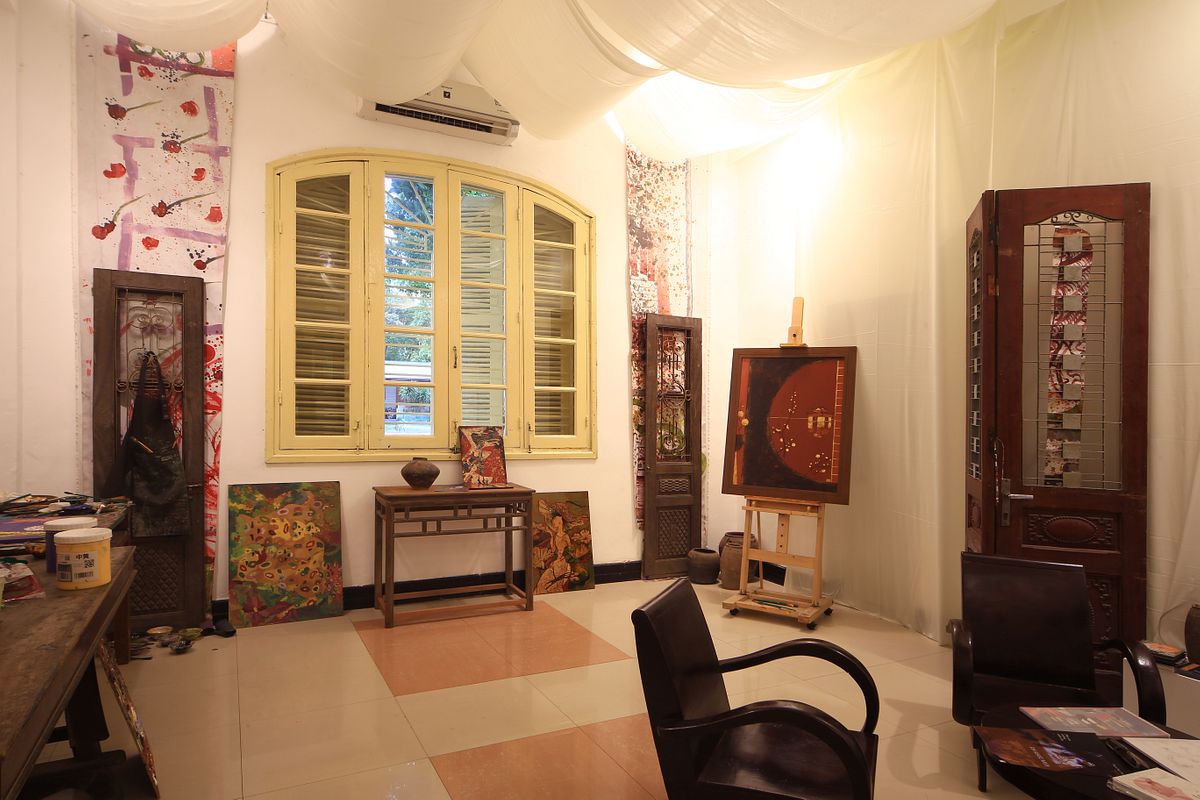
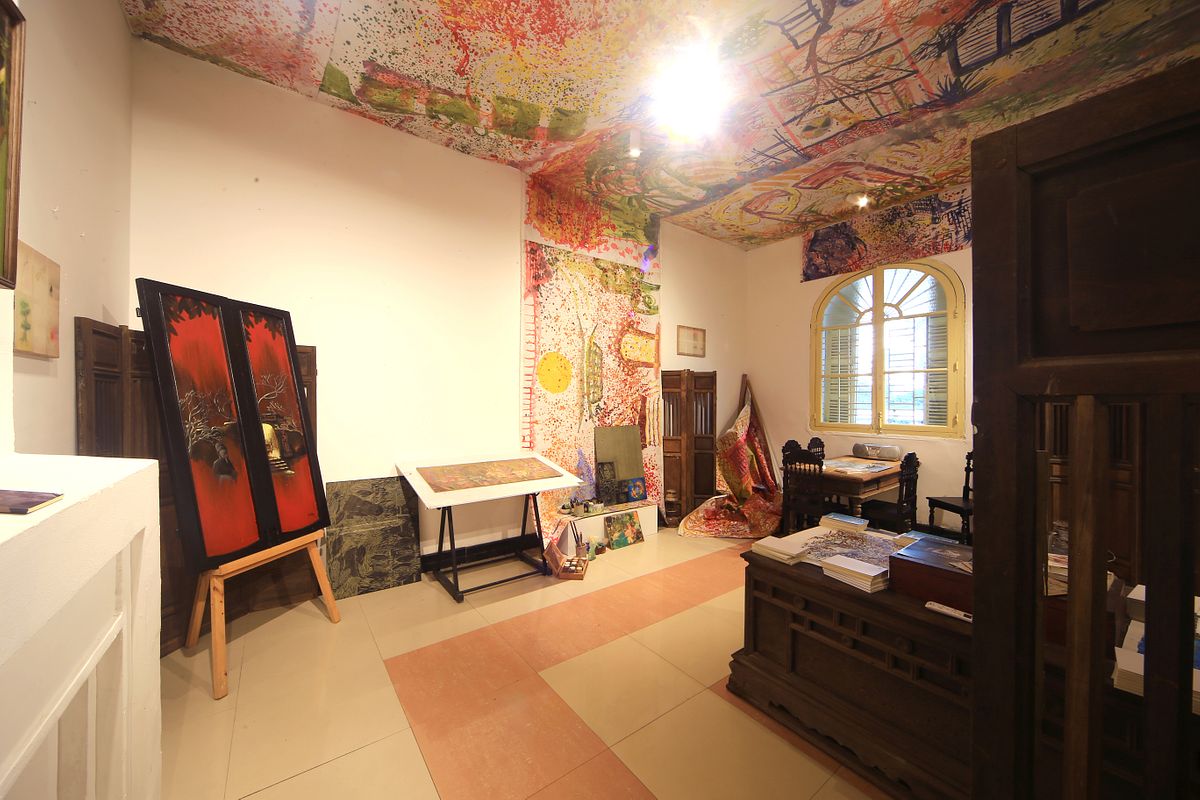
But of course, Lê Hà cannot be on hand for everyone that will visit the exhibition during its run through the end of October. Entering the three-room exhibition with no context or explainer, one will likely first marvel at the doors. Their varying styles, sizes and states of use will elicit different reactions. On the opening night of August 3, I overheard more than one person exclaim how a door reminded them of one in their childhood home.
While the first room contains nothing but doors and beautiful common flowers, the second two are arranged like the private dwellings of artists. The first features several paintings hung on the walls surrounding a comfortable sitting area and calls to mind the dwelling of an older, established painter who seems to have found a sense of peace and stability in his or her profession. The doors here have a subtle presence and do not overwhelm the space’s overall balance. The final room, in contrast, exudes creative chaos: paints, brushes, roasted eggshells, canvases and books are scattered about. The ceiling is covered in large unfinished works. The doors stand closer to the entrance, somewhat intruding on one’s arrival into and exploration of the space.
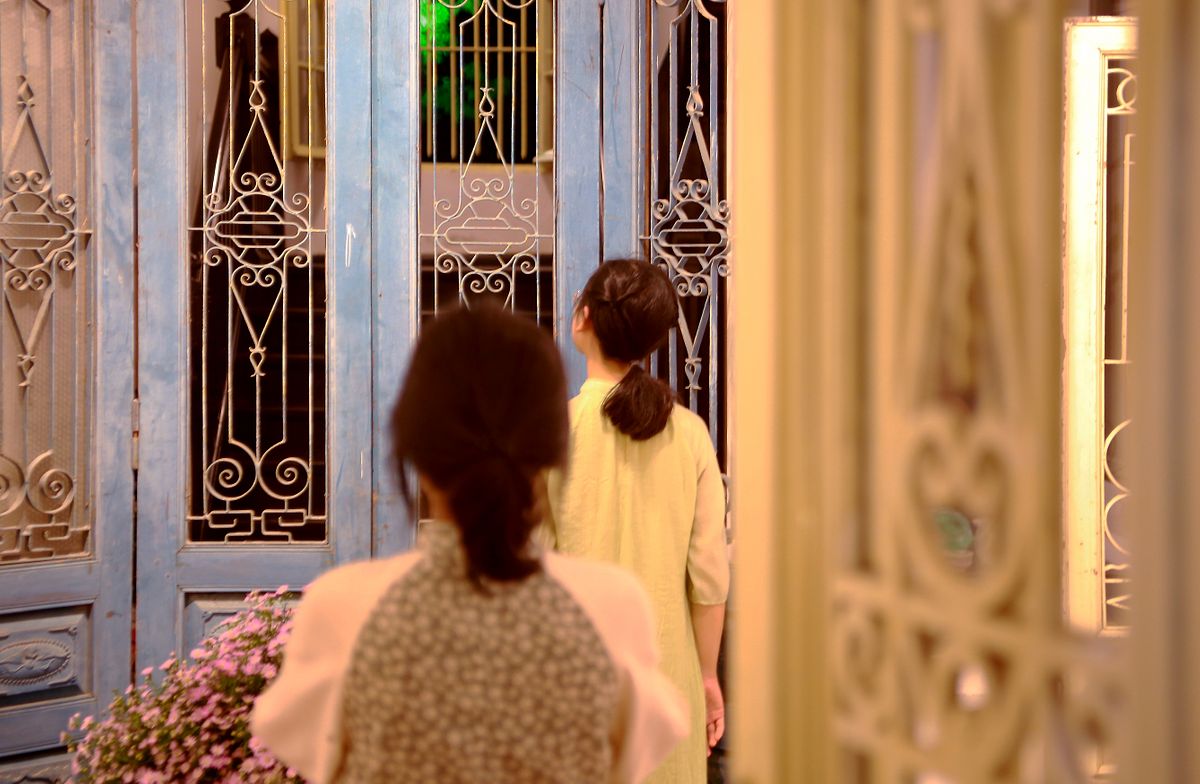
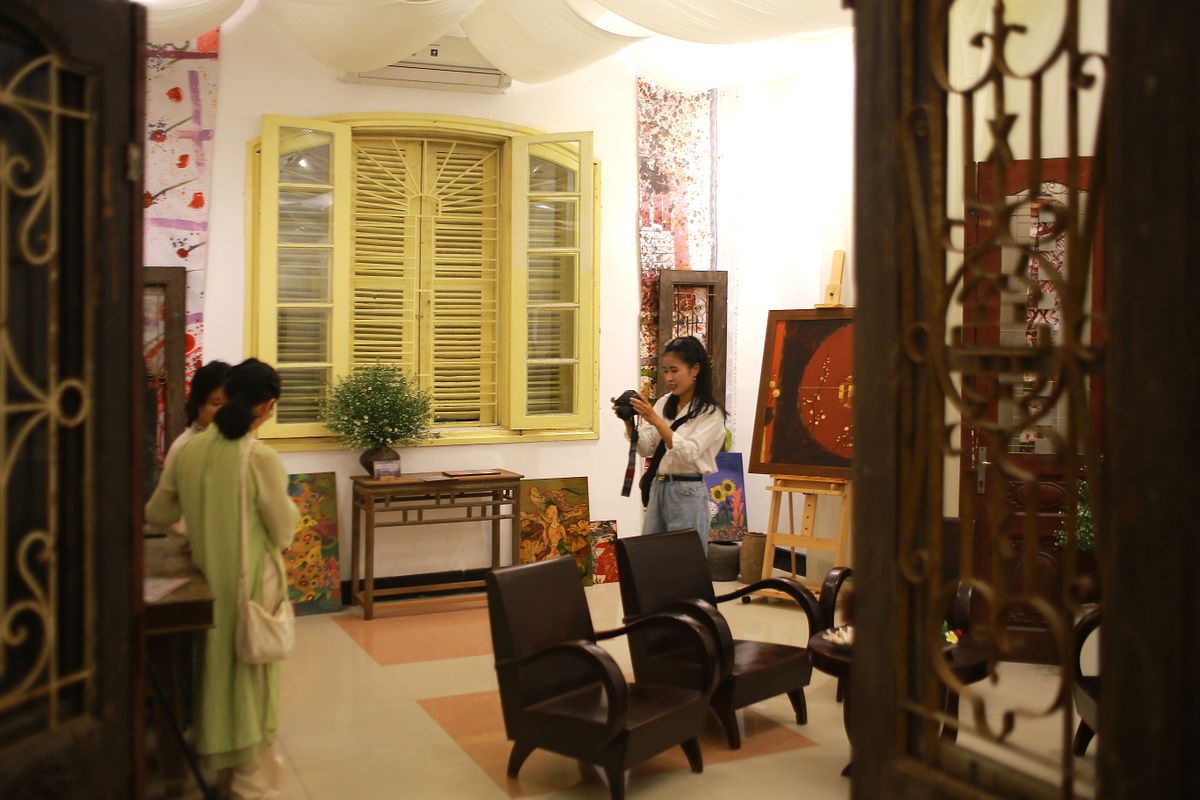
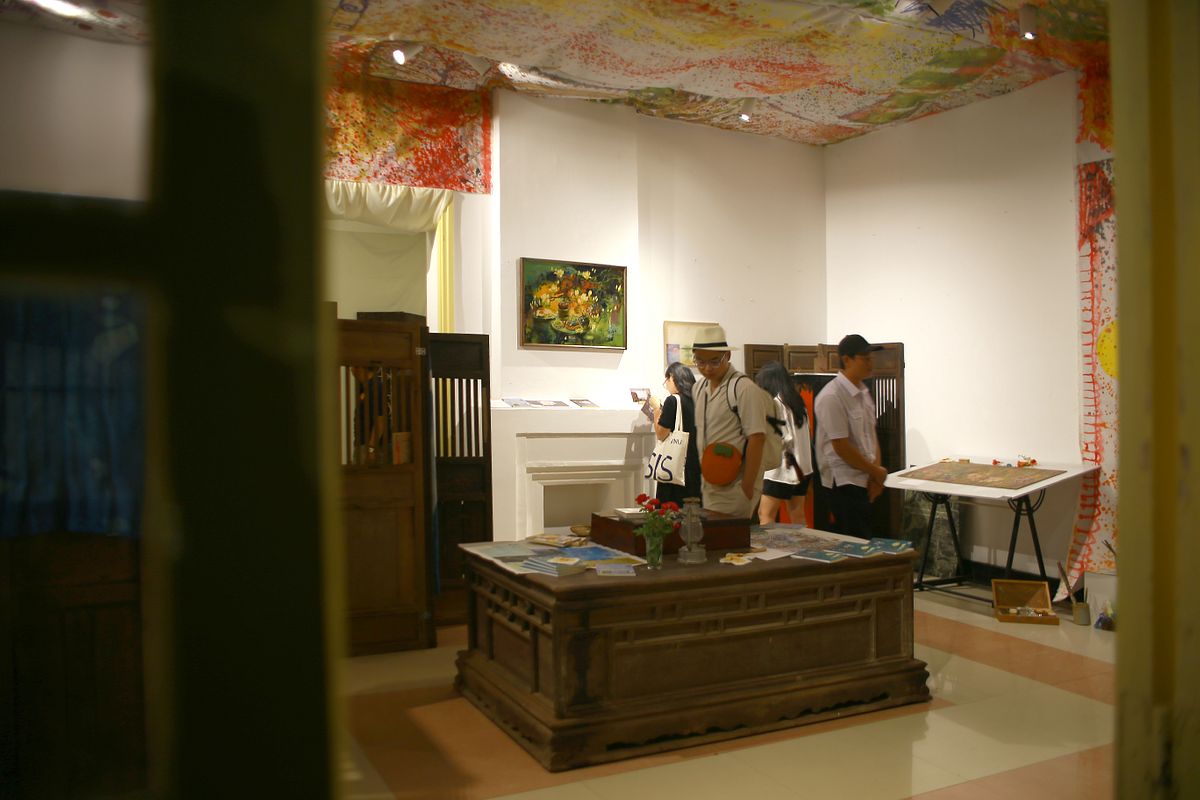
When it comes to contemporary art, how much a guest knows about the intent behind the work can matter a great deal. No formal information hangs beside any object in the exhibition, so most visitors will need to look within to have creative discourses with the doors, recreated studio rooms, and flowers. What separates art from furniture and how is lacquer implicated in the distinction? How much time must pass for a tool of convenience to become an artifact? If flowers are beautiful, in part, because of how temporary they are, what is it about doors that makes them more interesting the older they become? There are many conversations to be had.
But if one continues to linger they will eventually notice the books placed on shelves and tables. Lê Hà has published two novels and two books of poetry and each of them is intimately related to the exhibition. For example, one might flip to the poem, ‘Những Vết Sẹo Trên Mặt Gỗ’ (Scars on Wood) which includes the lines: “Những vết sẹo trên mặt gỗ / Như những vết thương trên thịt da / Như những bông hoa nở trên đá” (The scars on the wood / like wounds on flesh / like flowers blooming on rock).
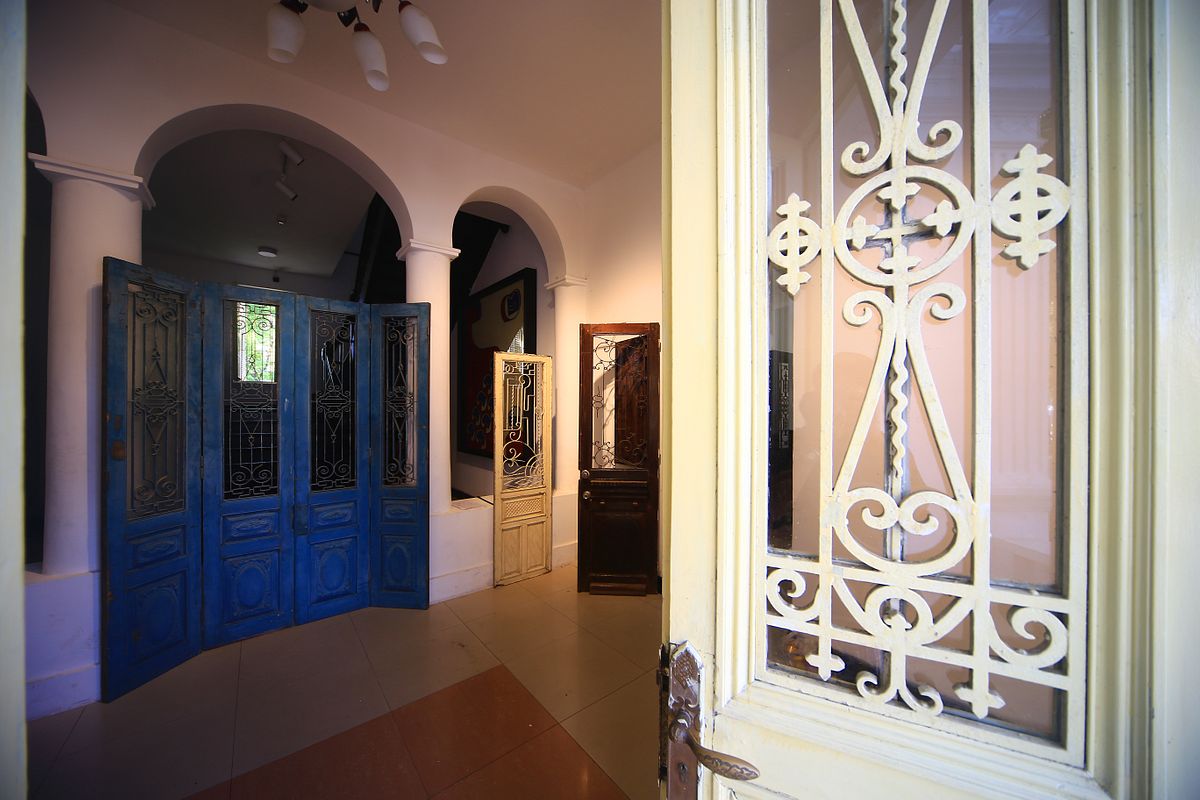
Reflective of what inspires her, Lê Hà’s poems frequently incorporate images that are also found in the exhibition, but the connection between installation and fiction is even more direct. Each of the three rooms corresponds to a character in the recently published, “Phía sau những cánh cửa – Dạ khúc mưa” (Behind Doors - The Melody of Rain), which is a sequel to a novel that also had a corresponding art installation in Hanoi. The first room represents the young protagonist who is searching for her place in the world with significant secrets or hidden family details to uncover. In the novel, she travels to Huế with her architecture professor to witness how imperfections granted by time and use impart soul to structures. In the process, she abandons her sterile designs reminiscent of Dubai or Singapore high-rises and instead embraces the time-worn elegance of old family homes, theatres and buildings passed down through generations.
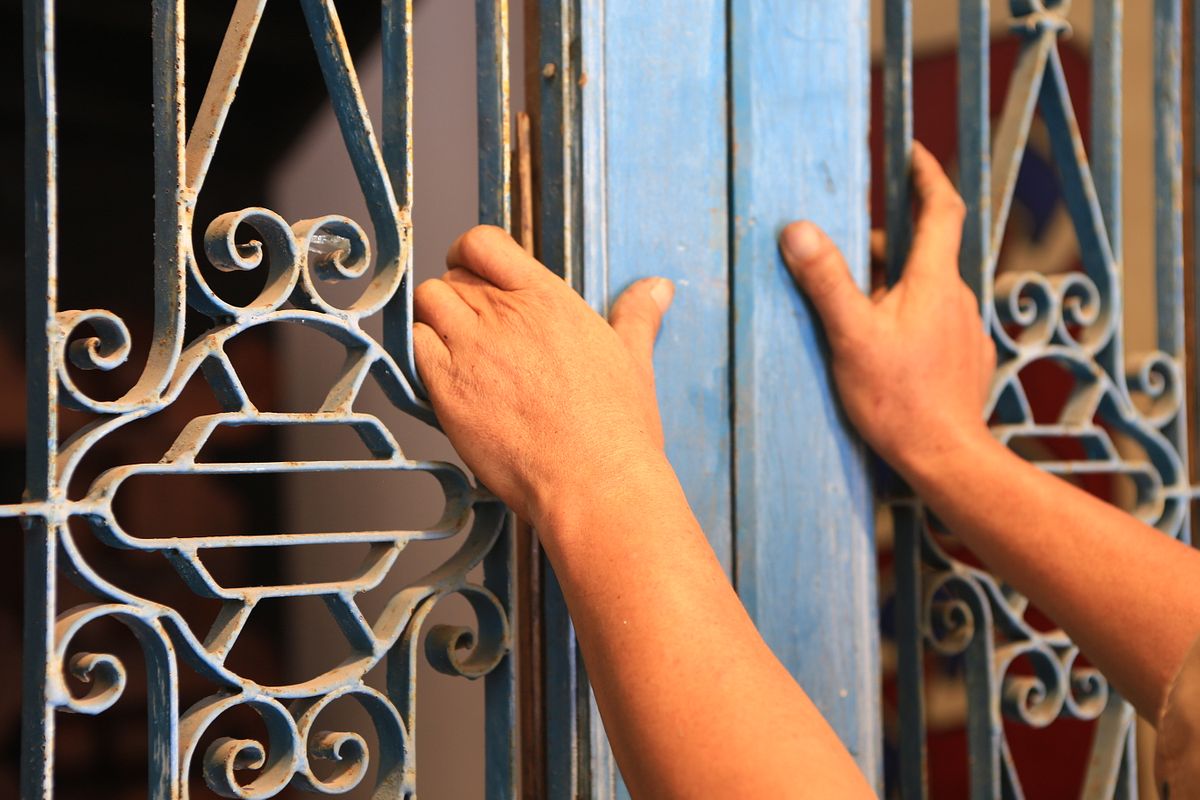
The second room is that of an older lacquer artist whom Lê Hà based in part on a living artist whose studio was nearby in Hanoi. She learned about the physically taxing process to create sơn ta — a particular type of Vietnamese lacquer painting — via extended visits and conversations. “He felt he was chosen by Vietnamese lacquer,” she explained. “He thinks of it as a lover; even refers to it as ‘người tình.’”
Sơn mài or sơn ta (Vietnamese lacquer painting) is a dwindling art form nowadays. Alternative lacquers from Japan and elsewhere are easier to work with and less painful; the tree resin used for Vietnamese lacquer contains a specific toxin that many are allergic to. And compared to oil and watercolor paints, to say nothing of digital technologies, sơn ta is a ridiculously time-intensive medium. For the character in Lê Hà’s novel, the doors into the past that he travels through to connect with it are ones few have interest in opening.
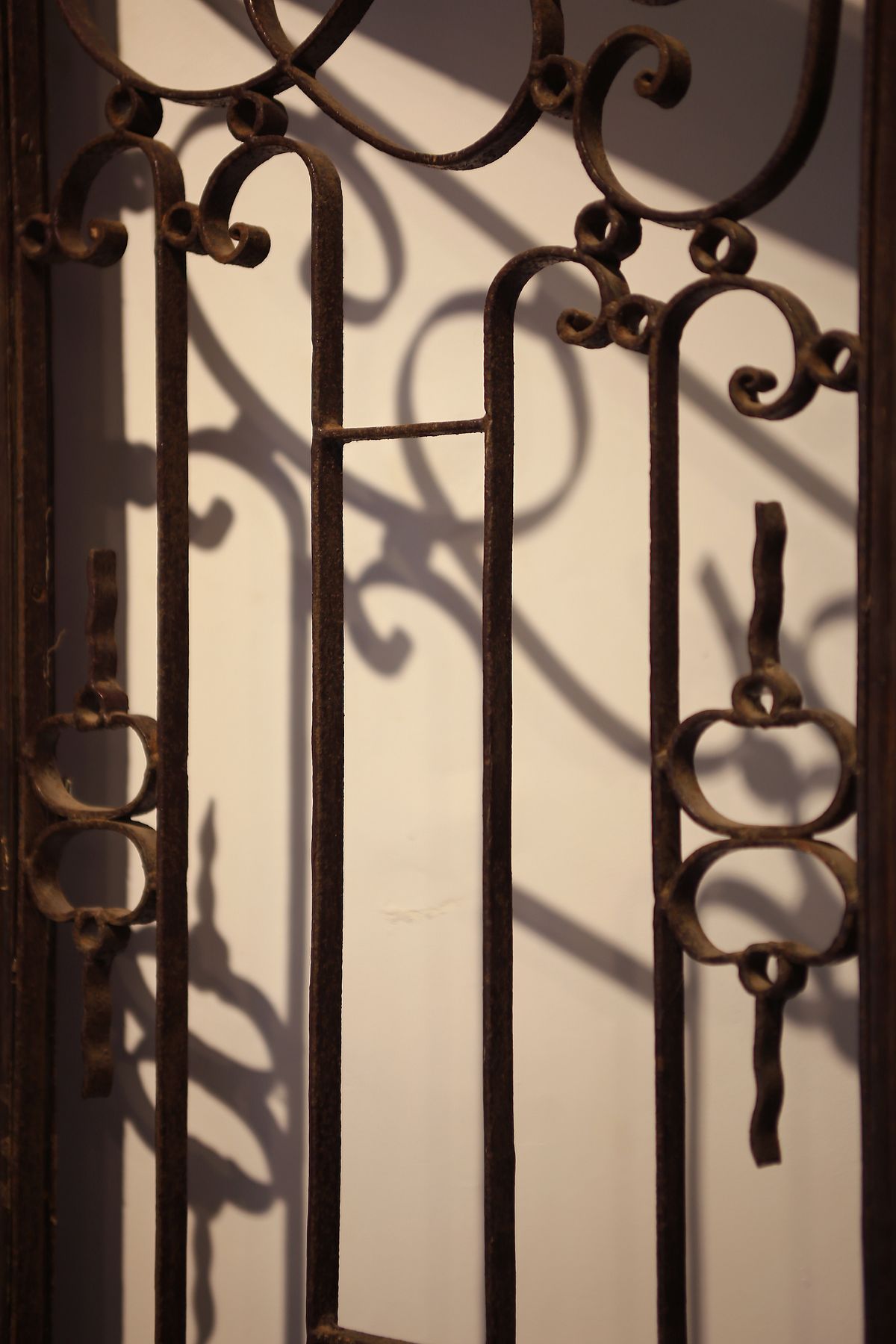
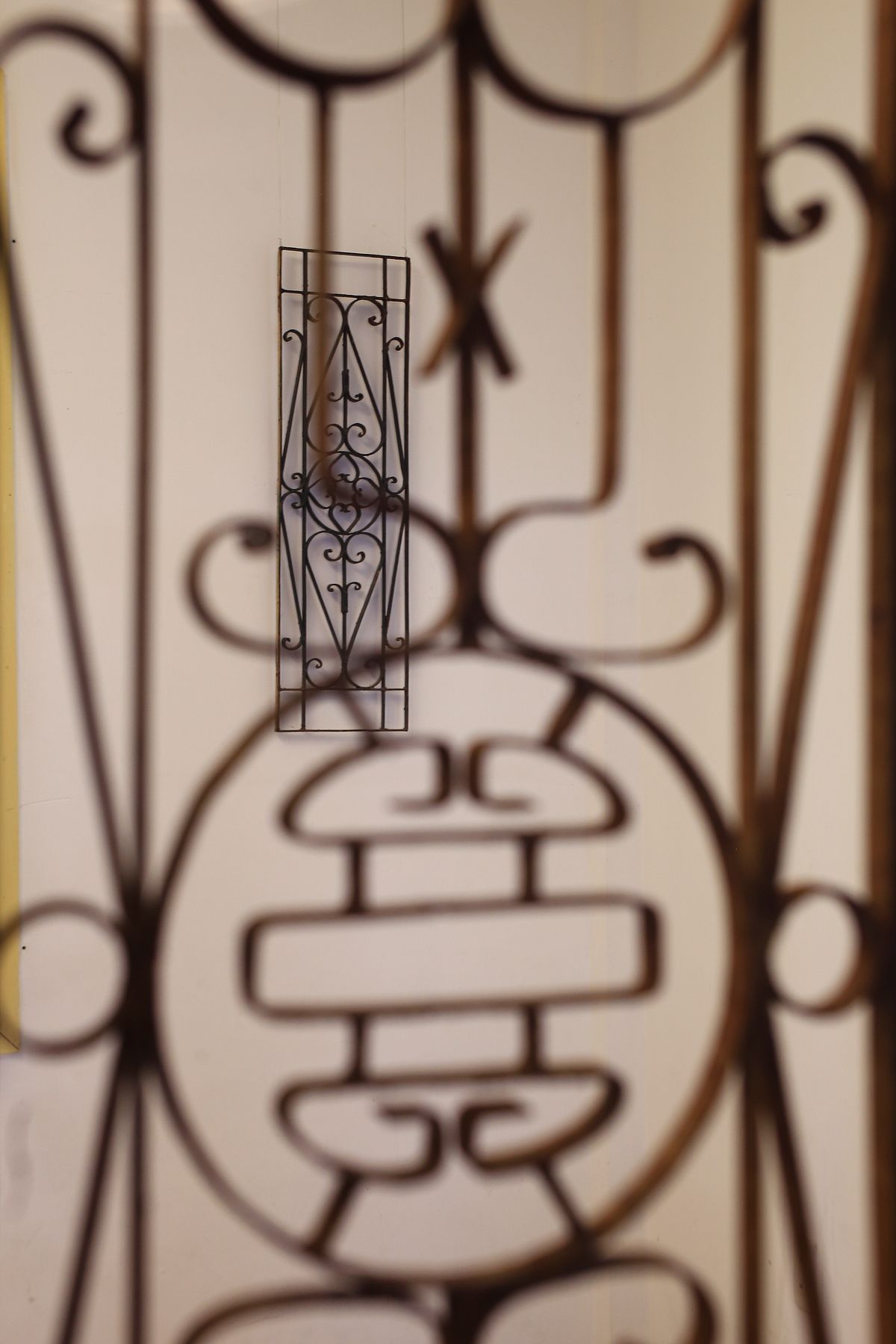
My conversation with Lê Hà drifted between the fictional character who inspired the orderly room we sat in, the real-life artist on whom he was partially based and the exhibition as a whole. Lê Hà’s curiosity seemingly knows no bounds and she offered up what she has learned about the legacy of lacquer in Vietnam, along with fascinating anecdotes such as how Vietnamese lacquer artists were sent to France during World War I to seal airplane wings. Via apt parallels, she then transitioned to talking about another heritage art form: ca trù or hát ả đào. Popular in the early 20th century in Hanoi, the poetic form of singing flowed from the imperial courts and shrines to urban spaces, attracting the capital’s creative and intellectual communities.
Ca trù fell out of fashion in the 1940s and 1950s, when critics came to see it as a product of both colonialism and feudalism that was marked by scandals and behind-closed-doors affairs interwoven with polygamy, she said. It even fell victim to public, official ridicule. After Đổi Mới, such associations eased, but by the time general audiences were willing to again appreciate its sophistication and beauty, many of its practitioners had passed away or moved on from it.

“Many people don’t want to open doors to the past,” Lê Hà noted with sadness when discussing the current state of ca trù. Still, there were some people that kept it alive within closed rooms and were excited to bring it back into the open. Meanwhile, other, younger people are now eager to learn about it and help continue its legacy. Lê Hà is one of these individuals and thus, ca trù plays a significant role in her novel much like lacquer painting, even if it's more difficult to recognize in the installation. She said ca trù would be a major focus in her next installation.
Doors perform their greatest metaphorical work in the exhibition’s third room. Situated near the entryway, they stand as impediments to guests entering. Lê Hà explained that the space corresponds with a fictional young Việt kiều who has moved to Vietnam in the novel. As a means of connecting with his heritage, he attempts to learn sơn ta. He’s stymied by the challenging art form until the inhabitant of the second room provides an entryway.

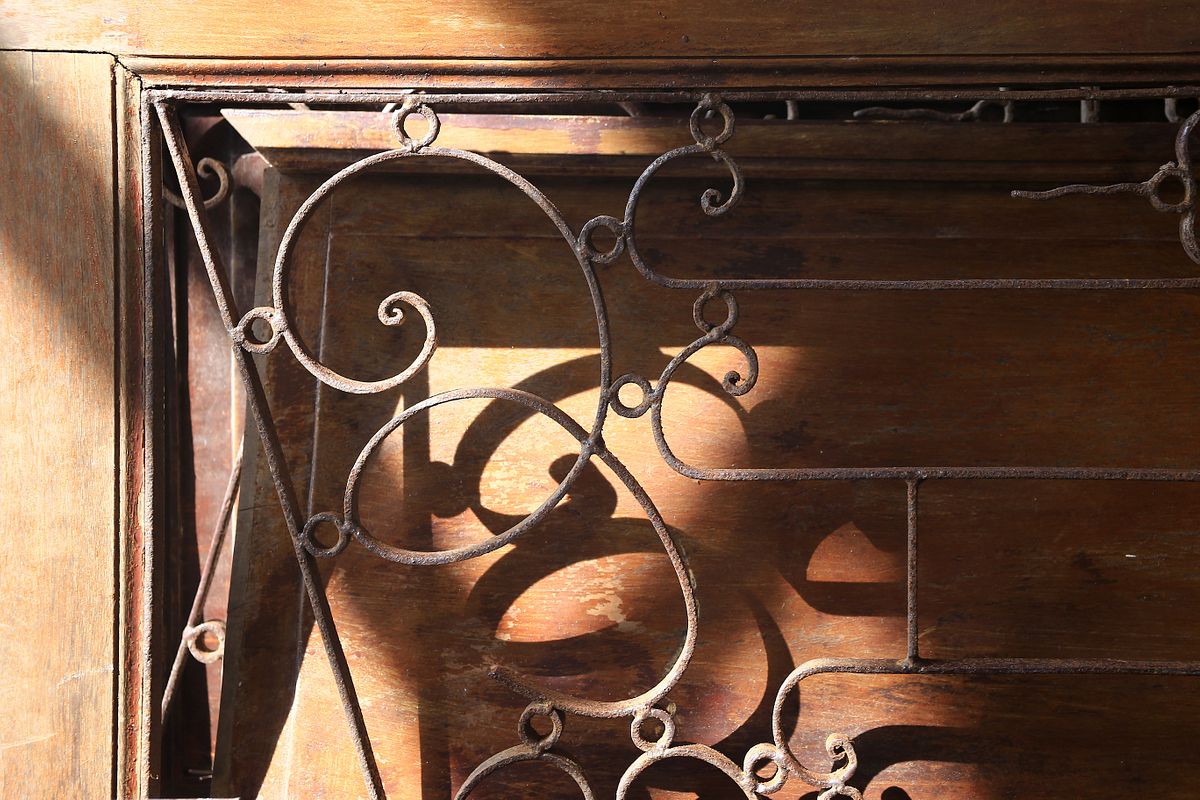
The third room’s ceiling is covered by his in-progress depictions of boats, doors, vegetation, and more, that give a glimpse into the fictional artist’s mental and emotional preoccupations. Lê Hà, Liam and Trung and their friends — Chung and Lực — created the sprawling 60 square meters of overhanging art in Huế as part of the preparation for the exhibition. While the showcase originates in Lê Hà’s creative vision, bringing it to life required the group to collaborate closely. Trung, for example, an architect by trade in Hanoi, had already honed his door-hunting skills when supporting Lê Hà’s previous exhibition, which now remains in her parent’s home. When old buildings are being torn down to make way for larger mansions and boutique hotels, contractors know to give him a heads-up. He was thus able to source a great number of doors and would consult with Lê Hà. Those that were selected for the final exhibition were shipped to Huế cheaply via trucks that had brought rice up from Saigon and would normally be returning south empty.
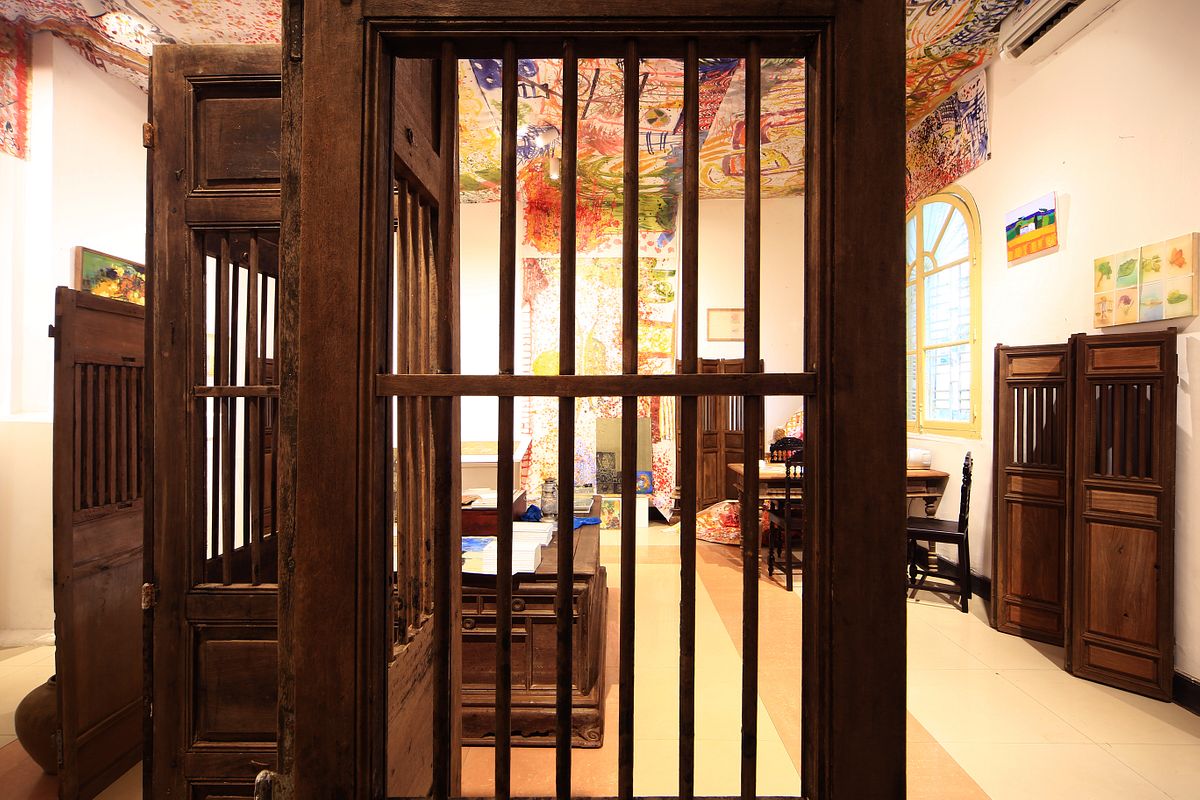
Learning about the installation process revealed a number of startling coincidences and improbable overlaps between the artwork and real life. For example, one of Lê Hà’s main characters is drawn toward a set of bright blue doors in Paris, but stops in front of them, hesitant to enter. Trung read that section of the novel on the same day that he happened across a nearly identical set of doors an old furniture store. The incredible occurrence resulted in the gorgeous doors being placed in the first room of the installation, drawing the attention of everyone as they entered the art space. A similar experience occurred when Trung noticed an antique wrought iron frame often found in French-style homes from the 20th century. Later that day he received an updated version of Lê Hà's novel manuscript and was shocked to read about a wrought iron frame.
As important as the relationship between Lê Hà and Trung is for the installation, the work has involved the generosity of many people across Vietnam. Lê Hà mentioned countless people who donated furniture, decorations, artworks and tools to the exhibition as well as the Điềm Phùng Thị Art Museum staff who were integral to ensuring the launch would be successful.
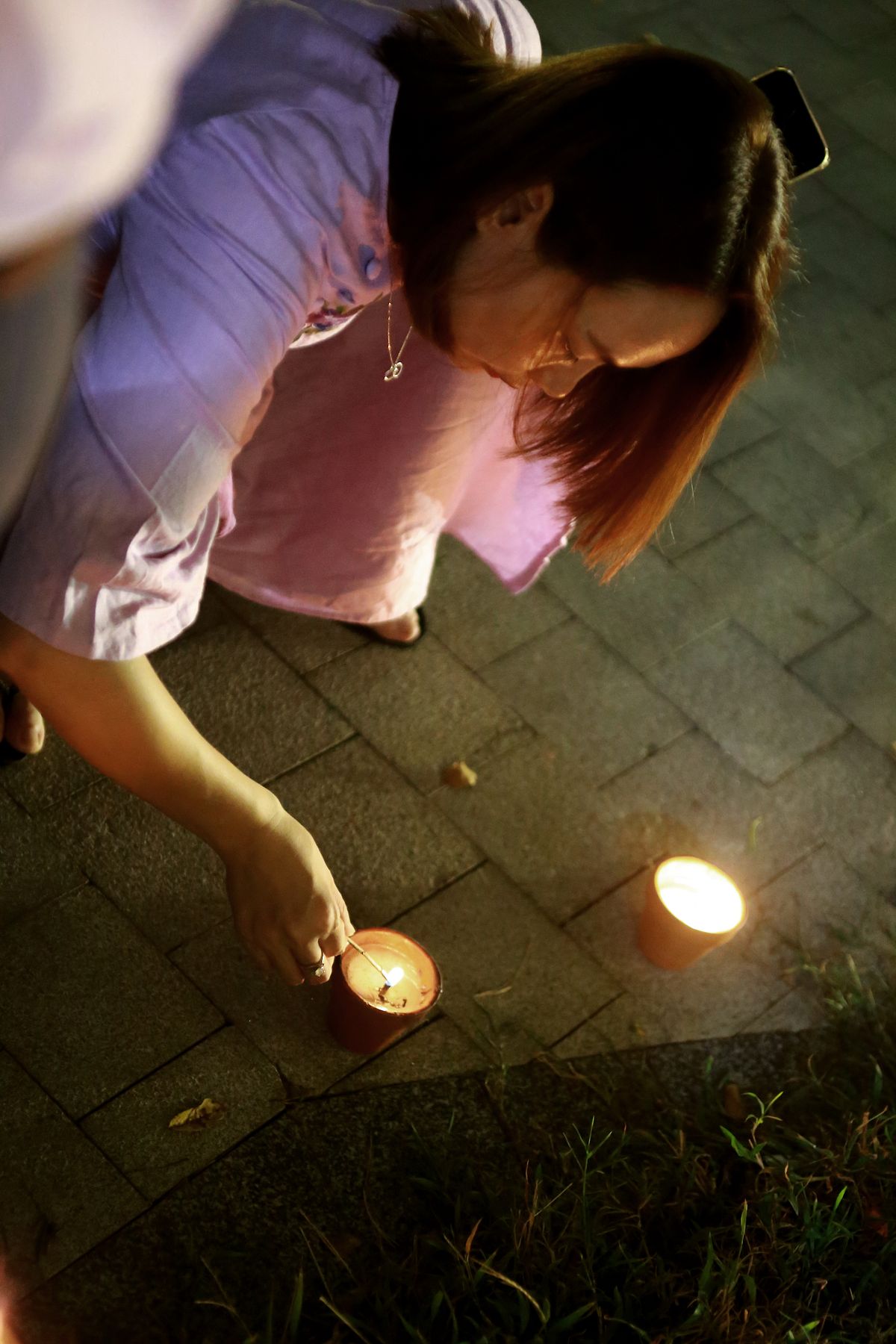
But as carefully planned out as everything was, the opening night did arrive with a surprise. Just as the welcome remarks were concluding, the power to the museum went out. Fifteen minutes of darkness, a first in the museum’s history, ensued. Undeterred, visitors eager to see the art entered holding cellphone lights while outside 100 candles created an ethereal, fairy tale-esque ambiance. Even Lê Hà was stunned as the handmade candles were a surprise gift from a friend who wanted to add a unique touch to the debut. This confluence of generosity and joyous happenstance, a perfect capstone to the evening, seemed as if it were destined to happen.
The exhibition debuted on August 3 to a large number of visitors. Some were tourists who had wandered past and dropped in out of curiosity (unintentionally, the doors beset by flowers make for ideal Instagram photo hotspots). Many were locals from Huế, and others were Lê Hà’s friends and acquaintances. Most notably, the attendees included a much higher ratio of academics than the typical installation attracts because it corresponded with the 14th Engaging with Vietnam conference that Lê Hà and Liam organized in Huế from August 1 to 6.
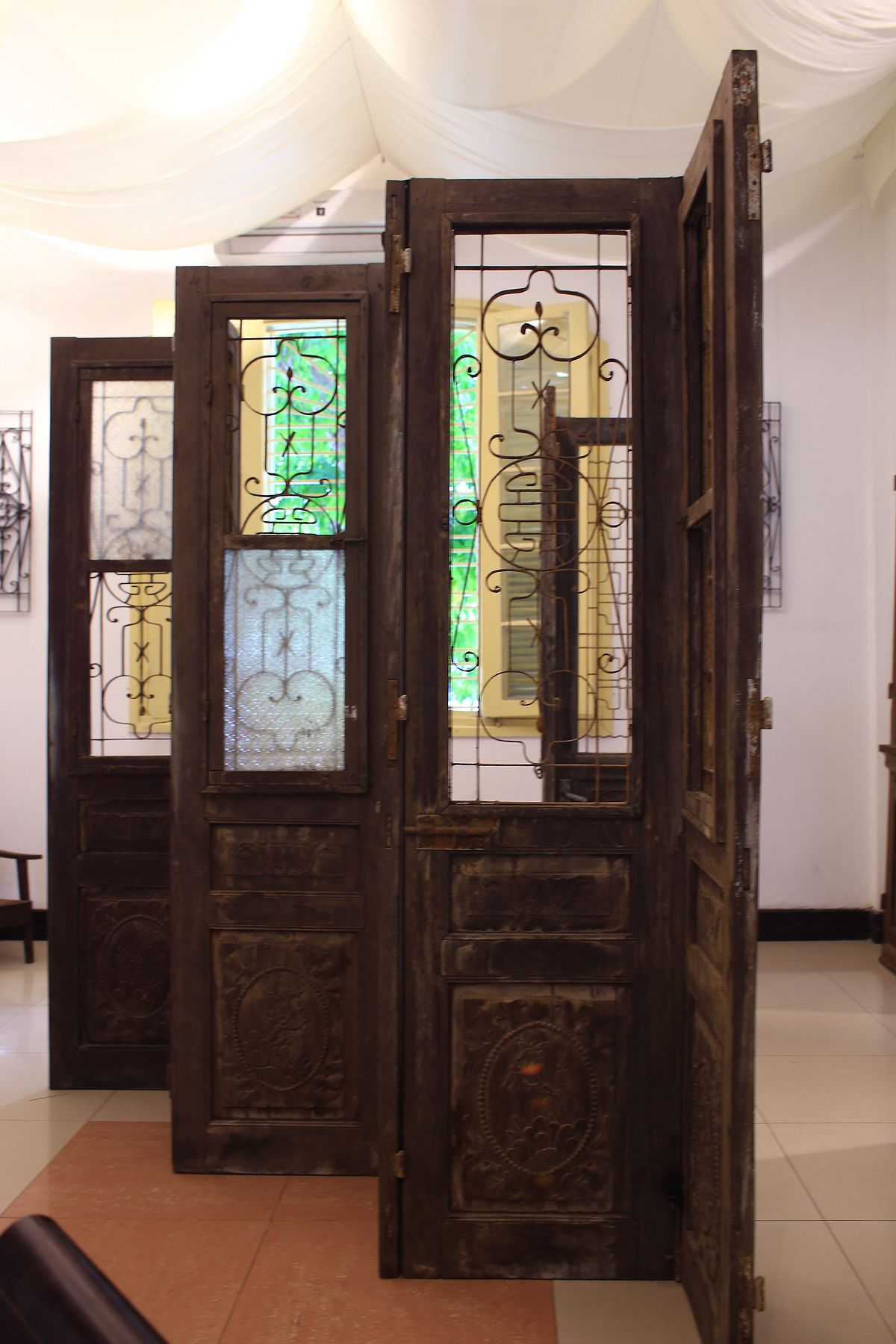
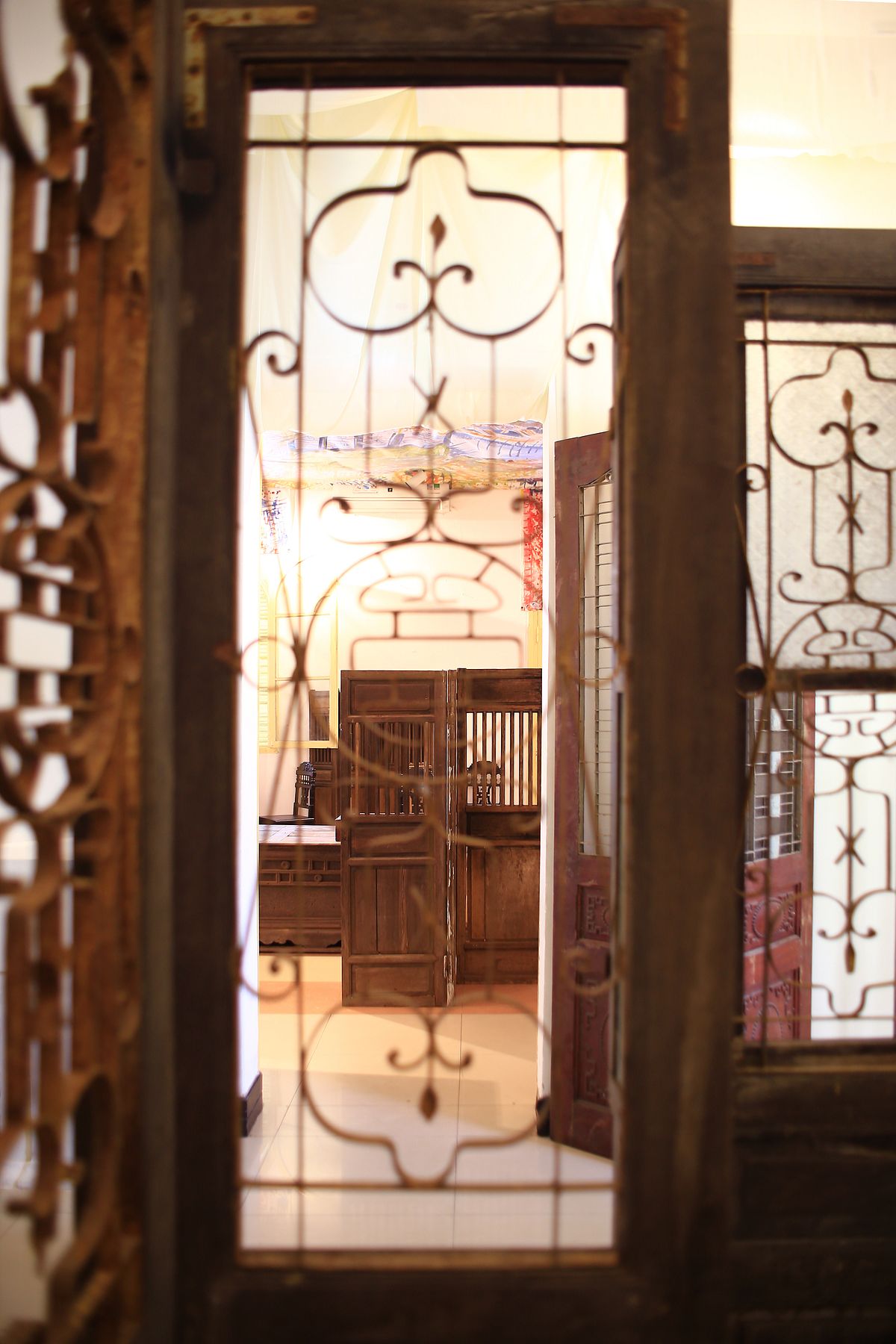
I was on hand to help host a poetry reading following the installation opening and felt like something of an interloper in the six-day affair filled with presentations based on deep and often niche scholarly research. I was thus curious to chat with some of the academics regarding the presence of art via Lê Hà’s exhibition and several other events, including an international fine art exhibition at the Huế University of Arts, and the Phong Y Yến, an art story of áo dài at Cung An Định. While some scholars expressed feelings of self-doubt when confronted with art, they appreciated its prominent place within the academic proceedings. Societies need a balance between the two and such an arrangement is made significantly easier when there is mutual respect and support. Humanity has and can never develop as a matter of only art or only science, after all. Individuals like Lê Hà who not only create spaces for the two to interact but work across them in their own passions are essential. As she explains: “Humanity is what holds us together. Humanity is what allows us to open doors.”
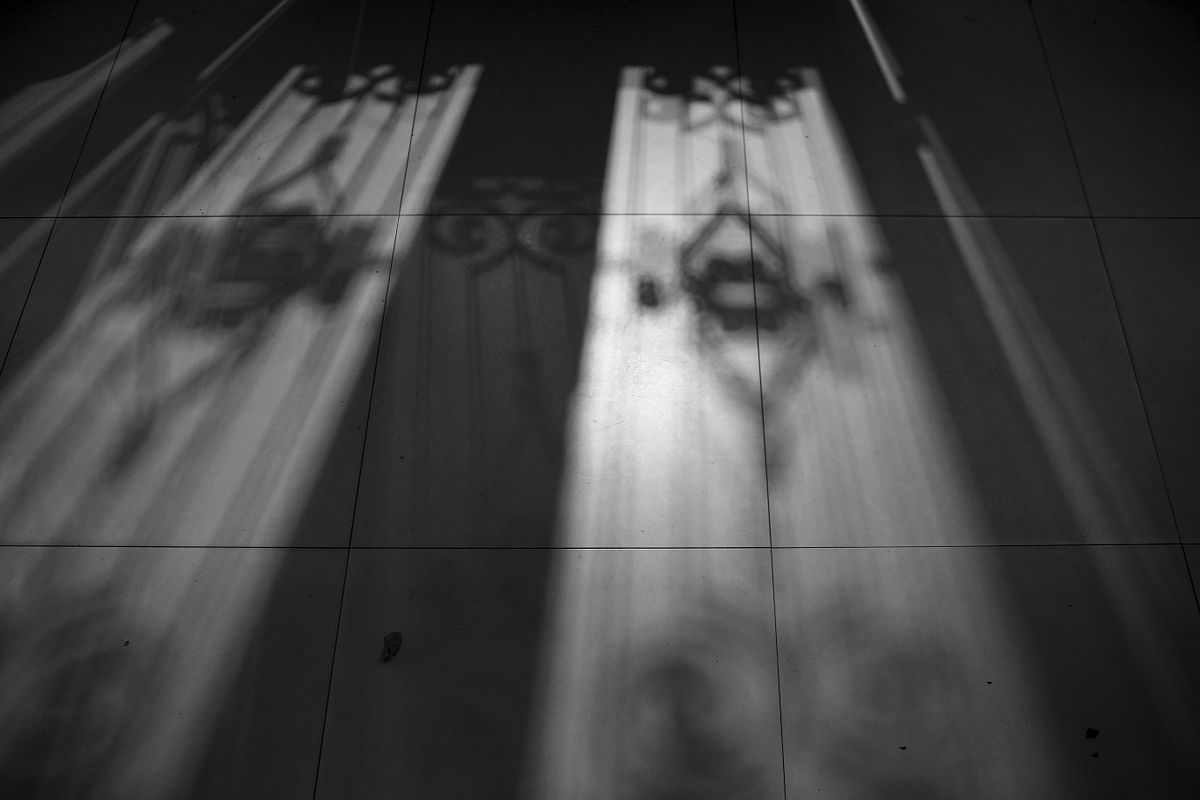
On account of the coming rainy season, The “Behind Doors - The Melody of Rain” multi-art installation will soon be moving to 3 Phạm Ngũ Lão, Huế City in October 2023.

